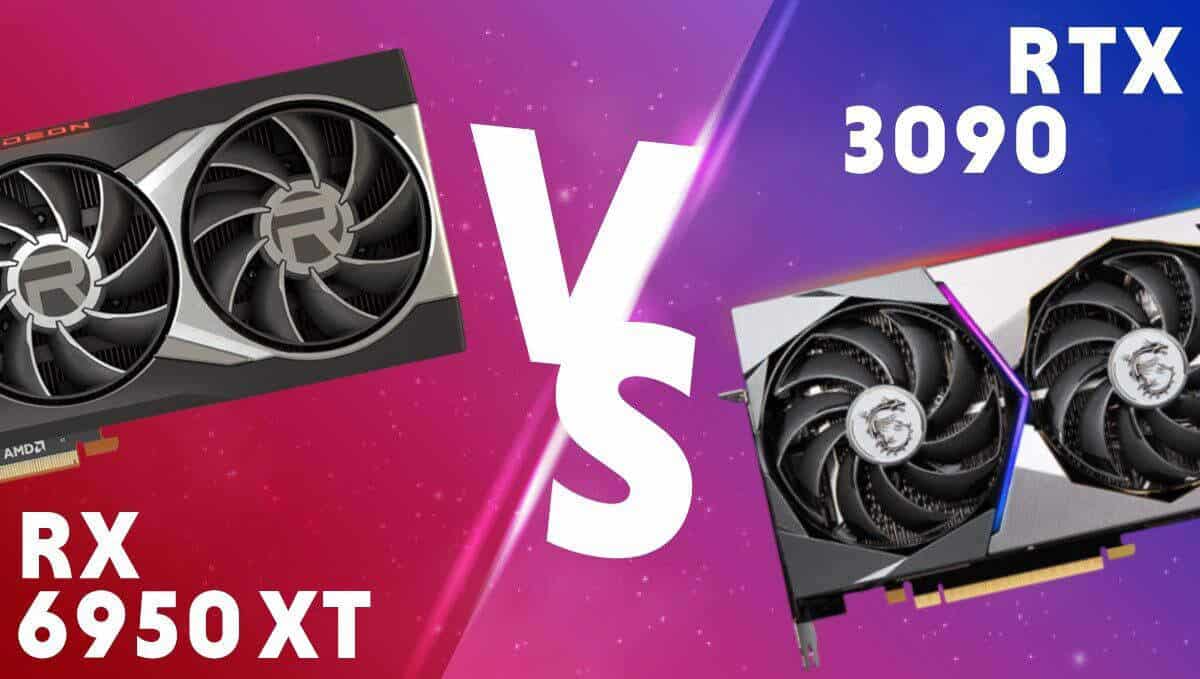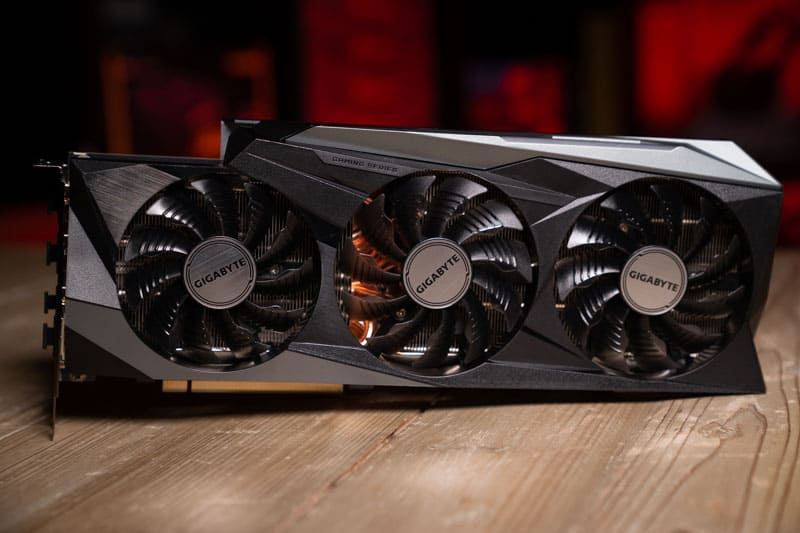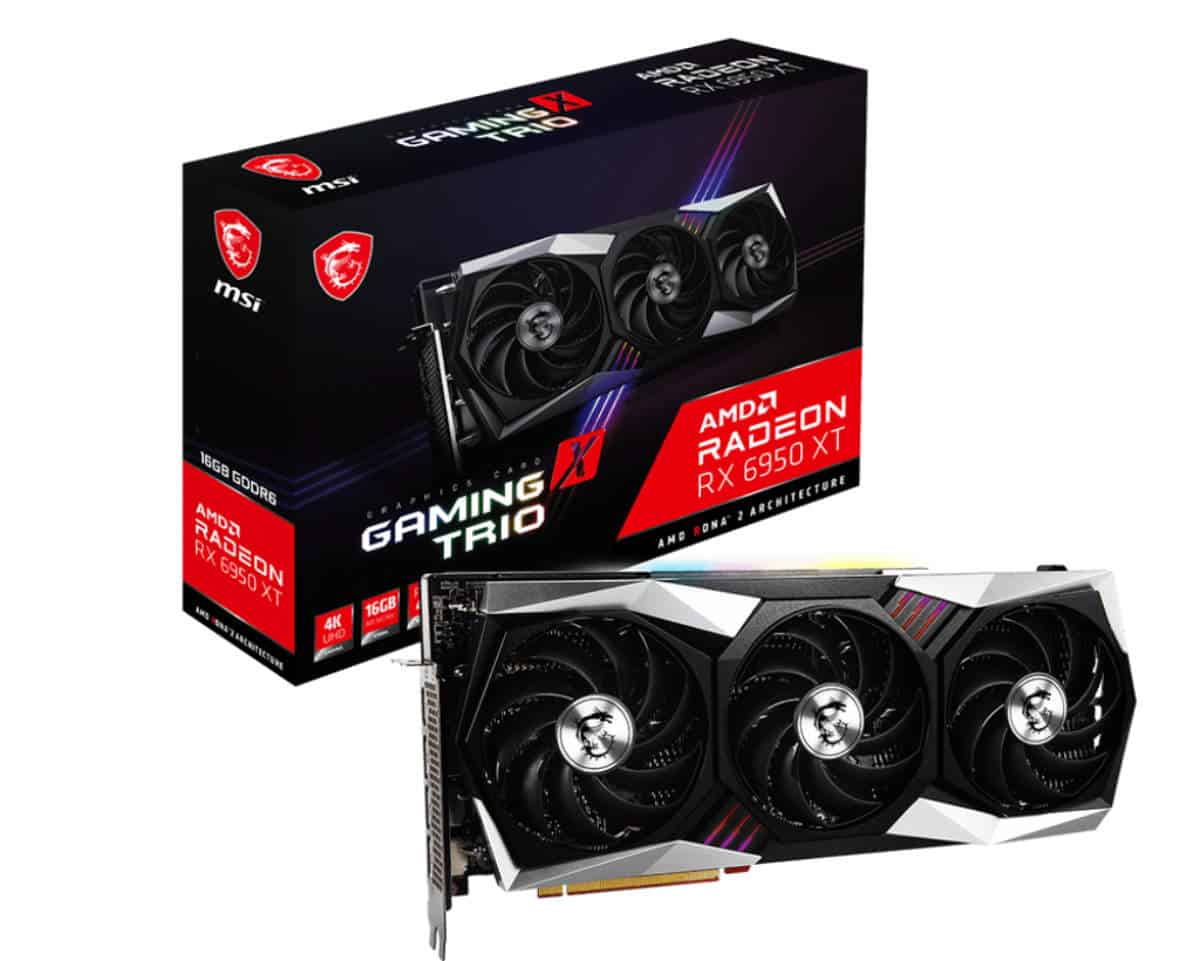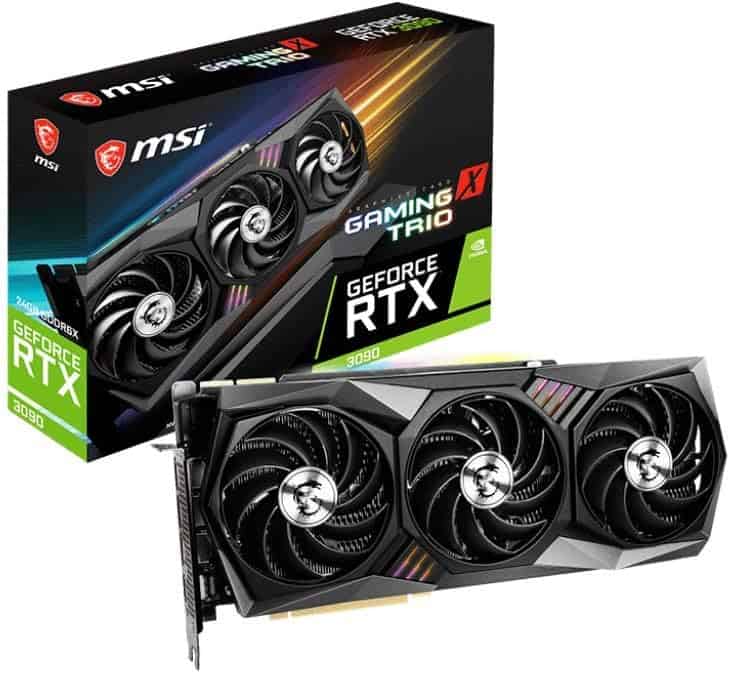SAPPHIRE Toxic Radeon RX 6950 XT

Great cooling
Potential for further overclocking
More expensive option
360mm radiator may be hard to fit into build
Is AMD the more affordable and better option?

WePC is reader-supported. When you buy through links on our site, we may earn an affiliate commission. Prices subject to change. Learn more
With the new RDNA2 refresh launched by AMD, there has been a few new graphics cards were launched. With a new flagship in the Radeon range, we see how how it holds up in the RX 6950 XT vs RTX 3090 comparison. Both fighting over the position of the best graphics card.
The RX 6950 XT is the newer card that launched in May 2022. As part of an improvement over what it was currently offering. However, the new flagship doesn’t upgrade enough or become too expensive to fight the 3090 Ti. So more compared to the RTX 3090 that launched in Nvidia’s original lineup in September 2020.

Great cooling
Potential for further overclocking
More expensive option
360mm radiator may be hard to fit into build

New 11-blade fan for increased airflow
Stays cool
Freeze fan stop technology
Excellent build quality
Can become noisy
There is no real one-to-one comparison when comparing the architecture of two different manufacturers. This is since they will be built and work differently from each other. So it’s not a direct comparison but more of an understanding of how they’re built.

Now the AMD GPU is based on the same as its predecessor but slightly improved, with the Navi 21 KXTX. Although still made with the same 7nm TSMC process. With a die size of 520mm² containing 26.8 billion transistors. Whilst the RTX 3090 is on the Ampere GA102-300 die, which is made with Samsungs 8nm process. Creating a die 628mm² in size, with 28.3 billion transistors.
| RX 6950 XT | RTX 3090 | |
|---|---|---|
| GPU | Navi 21 KXTX | GA102-300-A1 |
| Shaders | 5,120 | 10,496 |
| RT cores | 80 | 82 |
| TMUs | 320 | 328 |
| Memory | 16GB GDDR6 | 24GB GDDR6X |
| Base clock | 1,925MHz | 1,395 MHz |
| Boost clock | 2,324MHz | 1,695MHz |
| Memory clock | 18 Gbps | 19.5 Gbps |
| Card bus | PCIe 4.0 x16 | PCIe 4.0 x16 |
| Memory bandwidth | 576.0GB/s | 936.2GB/s |
| TDP/TBP | 335W | 350W |
Another way to compare the RX 6950 XT vs RTX 3090 is by comparing the specifications. Although also to be taken with a grain of salt from the different builds it shows some differences to consider.
With a basic look at the two cards, we see what the dies are made up of. Each of these has particular functions to work on and provides work to create what you see. In particular, there are shaders, on the shadows and lighting of a scene. RT cores working on real-time ray tracing of the scene. As well as the TMUs, creating 3D objects from bitmaps.
Comparing the numbers between the two of the GPUs, the 3090 does double the shader count. Although also potentially down to the architecture itself. But in terms of RT cores and TMUs, the 3090 only takes it by single digits. But it also comes down to optimization and design.
The video memory is utilized for buffer and pixel storage. Lowering the latency of transfer between the CPU and GPU for a better experience. As well as enabling higher resolutions to run smoothly with their large pixel collections.

Of the two graphic cards, it’s the 3090 that does have the larger and faster selection. It has 8GB more as well as uses GDDR6X. This enables a faster clock of 19.5 Gbps nearly doubling its bandwidth of it. This is more effective for large resolutions and production work so it may not be the biggest decider.
Also known as the cycle rate it’s the silicon in the die’s ability to process instructions. It is how often the crystals can flip and process the maths to produce the images. The rate is the speed at which those instructions are worked on and can provide some performance. Although not the sole metric it is a good option for overclocking to improve it.
In the case of RX 6950 XT vs RTX 3090, it’s the AMD card that has the faster options. The current card runs at nearly 2GHz base clock by standard and boosts to at least 2.3GHz. Whereas Nvidias only runs at 1.4GHz and boosts to 1.7GHz.
Total design/board power is the rating of the maximum amount of energy the GPU will consume at max utilization. Not only will it let you know how expensive your electricity will be but also what kind of heat output will be generated. This is because the energy is converted to heat as waste. So comparing the two GPUs the 3090 is the one that runs more powerful and hotter by 15W.
Comparing gaming performance, Tom’s Hardware has an extensive review with benchmarks on the card. In those and plenty of other benchmarks, you find the 6950 XT vs 3090 Ti trading blows. In the lower resolutions of 1080p and 1440p, the 6950 XT takes the lead overall on average. Even at 4k, where the 6950 XT just falls behind the 3090 Ti, so still takes over the 3090.
Ray tracing is also where AMD falls behind across the board. This means the 3090 leads whilst the 6950 XT loses out to a 3080. This is also the case in any performance-related tasks where it is slower. However, with the price difference between the two, that’s not the worst.

The cost of a graphics card is quite a deciding factor for most people. Especially these days when GPU pricing is still uncertain. The RX 6950 XT increases the price of its predecessor up to $1,099. Whereas the RTX 3090 was meant to start off at $1,499. So a $400 premium over Team Red. At the moment you may be able to get it at that price. With GPU price close to MSRP according to the last report.

Good overclock
Great cooling
Quite pricey
Bulky


Powerful cooling system keeps temps low
High clock frequency boosts performance above base level
Incredible build quality and design makes it a top pick from the crowd
On the higher end of the 3090 price spectrum
A high price to pay for the card with the current generation
Shop on Amazon
CHECK PRICEOverall, comparing the RX 6950 XT vs RTX 3090, the AMD GPU takes the lead for gaming performance. Especially for a much cheaper price, it is an easier choice. However, if you’re looking for other workloads then the Nvidia family is the better option.
Now with the new generation of cards, it might be an even better deal, with lower pricing from the older cards. Especially considering the pricing on the new ones is a bit higher. The RTX 4090 and RX 7900 XTX are both great in their own rights but looking for a deal, the older cards are still viable.
In the gaming benchmarks the 6950 XT averages between 8-5 FPS higher than the 3090 across three resolutions. A better across-the-board performance although not as wide of a gap as it should be.
Some of the lead in performance may stem from the higher frequencies the Radeon card can reach. It achieves a 38% higher base clock, as well as a 37% higher boost clock. Able to process the instructions faster, although other efficiencies don’t make it a direct ratio.